How To Catch Bream | An Ultimate Guide
Bream are one of the most common and highly targeted fish species in all of Australia. Bream are known to inhabit coastal rivers, creeks, lakes, and bays; mainly in brackish and saltwater. However, during the Australian dry season, they can sometimes be found in freshwater pockets. The wide range of suitable habitats means both saltwater and freshwater anglers can target bream.
Though bream may not appear to be as exotic of a species as a marlin or snapper, catching them requires a great deal of finesse and knowledge. If you would like to try your hand at landing bream, pay close attention as we lay out the ultimate guide on how to catch bream!
Disclosure: We only endorse products we’ve personally used or that have come highly recommended by our trusted peers. We’re proud affiliates for some of the products on our site, and as such, we may get a small commission if you purchase through one of our referral links. However, there’s no extra cost to you. Check out our affiliate disclaimer in our Privacy Policy if you’d like to learn more.
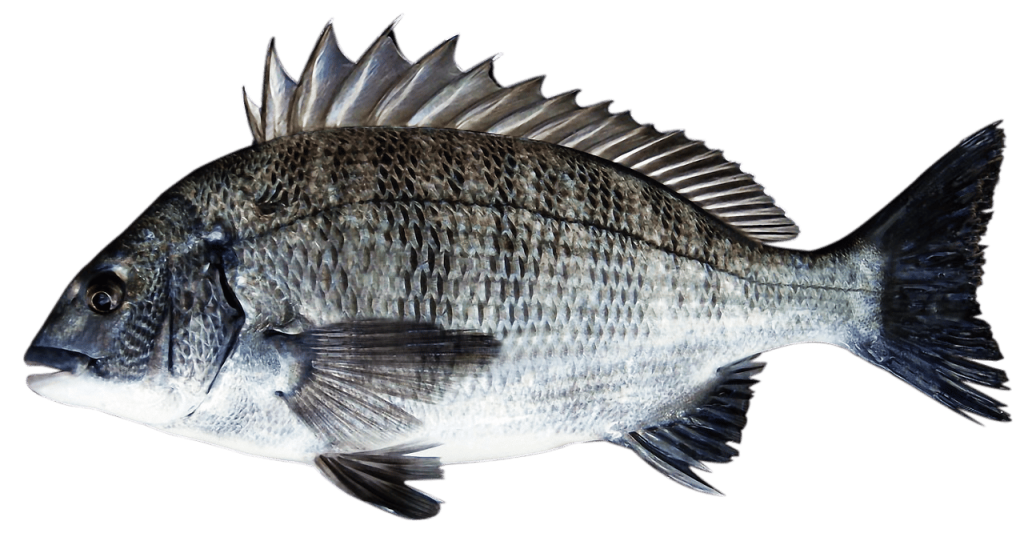
How To Catch Bream – Facts
Bream Facts
Before digging into the techniques required to catch bream, let’s first brush up on their biology.
Scientific Name (Acanthopagrus)
Did you know that there are around 20 types of Bream species? These fish make their home in the Indo-West Pacific region, and at least five species can be found off the coast of Australia. The five Australian bream species found in Australia are :
- Yellowfin Bream, (Acanthopagrus Australis)
- Black Bream, (Acanthopagrus Butcheri)
- Western Yellowfin Bream, (Acanthopagrus Morrisoni)
- Pikey Bream, (Acanthopagrus Pacificus)
- Northwest Black Bream, (Acanthopagrus Palmaris)
Characteristics
Bream typically max out at a weight of around 3.7 kg (8.1 lbs) and a fork length of 55 cm (26 in). They are slow growers and take around five years to reach a fork length (FL) of 23cm. Bream are endemic to Australia and are more specifically found in a variety of habitats from Queensland to Victoria.

They often inhabit seagrass beds, mangroves, bare substrates, rock bars, reefs and a range of other habitats. Bream mostly feed on molluscs, crustaceans, worms, and smaller fish. Bream are currently rated as “least concern” by the International Union for Conservation of Nature.
How To Catch Bream Tip #1
Bream Legal Size & Catch Limit in NSW
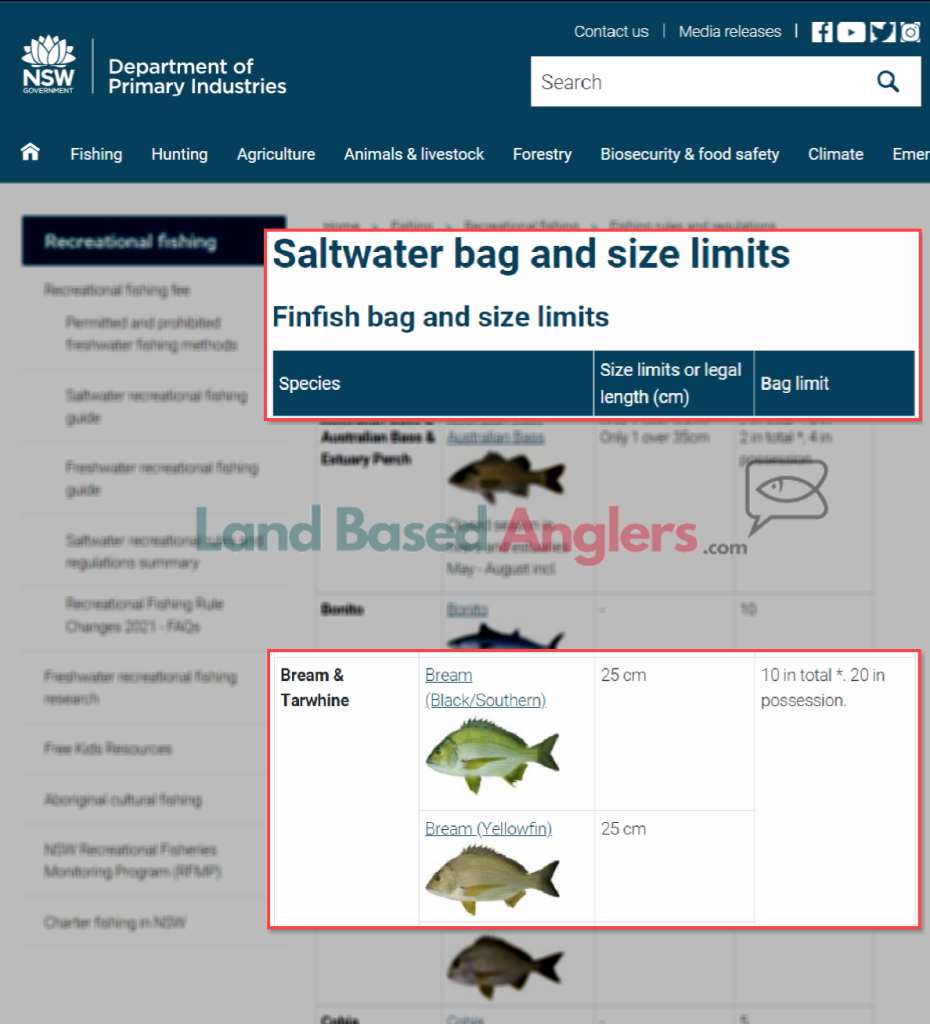
Despite the bream’s stable population in Australia, there is still a legal size and catch limit for any keen angler who’s chasing bream. According to the Department of Primary Industries, in order to keep a bream, they must be a minimum size limit of 25cm (9.8 in). Fishermen can only harvest a maximum of 10 bream per person.
How To Catch Bream Tip #2
How To Catch Land-Based Bream
Now that we have the basic information out of the way, let’s discuss how to catch land-based bream. First off, you will need a fishing rod, tackle and a fishing spot- but we’ll get into the specifics a little bit later.
Targeting Bream
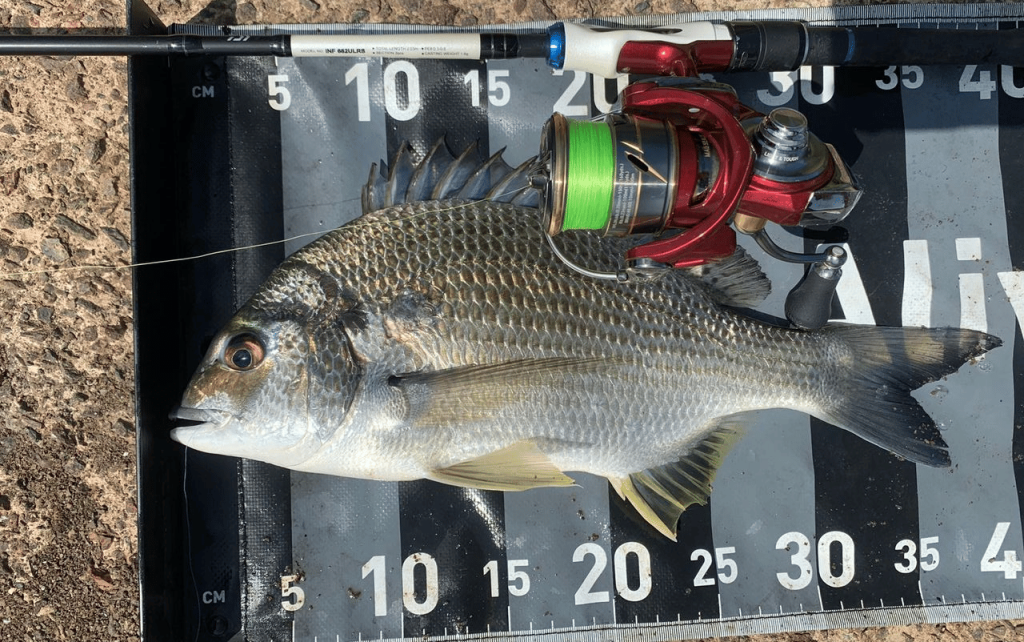
Targeting bream is exciting for many anglers because of their diverse habitats, which makes them an easily accessible target for both saltwater and freshwater fishermen. Their relatively small size makes them the perfect fish for kids who want to begin their fishing journey as well. Kids can easily handle the relatively lightweight fish, not to mention they are an inexpensive and tasty catch.
However, just because bream are small fish does not mean that they don’t require some basic skills and knowledge to land successfully.
When chasing bream, you will want to make sure you plan your fishing trip for either the morning or evening. Fish are most active during these times and less so when the sun is high. If you are fishing a spot affected by tides, be sure to check your local tide charts and aim for a time that coincides with either an outgoing or an incoming tide. Tides will force fish to leave their hiding places and cause their prey to move.
Make sure to seek out the structures or features of your fishing location that bream may be hiding in. Even with the best equipment and technique, an angler will struggle to catch fish if they do not know where the fish are.
Also, be sure to keep an eye out for schools of tiny fish or insects that the bream may be preying on. Oftentimes making a cast where fish are actively feeding will result in a higher catch rate because when fish are already in hunting mode, they will bite with a little caution.
How To Catch Bream Tip #3
Where Can You Catch Bream?
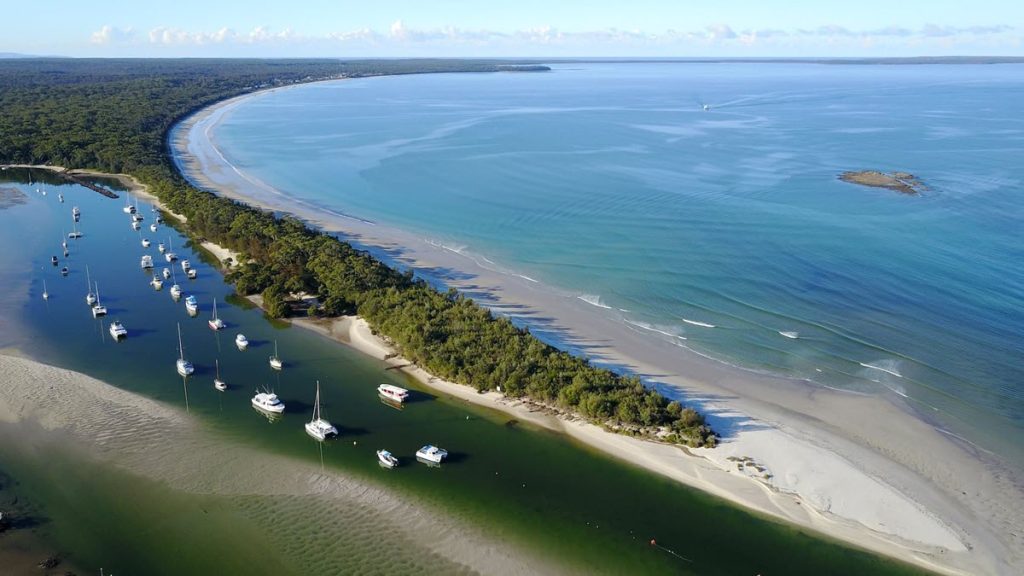
Bream are found in all kinds of different aquatic and marine environments allowing for an abundant amount of locations where you can catch them. In the summer, bream can most easily be found in estuaries and rivers. These locations often contain intertidal zones, which are areas that are covered by water during high tide and revealed during low tide.
Good features of intertidal zones to look for include dead trees, rock walls, a wreck, boat hulls, boat ramps or any other structure that may serve as a hiding place for bream. In order to effectively utilize these spots, you will need to fish during the high tide but make sure to observe them during low tide, so you know where the best places to cast are. This will not only increase your catch rate but will also help to ensure you do not get your hook caught on an immovable structure.
Even though high tide is best for fishing intertidal zones, remember fish will be most likely to bite when the tide is shifting and forcing them into or out of the intertidal zone’s structures.
The majority of bream populations are found on Australia’s east coast, but a few spots on the west coast offer opportunities to catch bream as well. Both Melbourne and Victoria offer many high-quality locations for catching bream. Sydney also is home to some prime fishing spots for Bream.
How To Catch Bream Tip #4
Best Bream Fishing Spots in Sydney, NSW
- Brighton-Le-Sands (Cooks River) – Brighton-Le-Sands, which is located on the Cooks River, is a great spot for catching bream. You can fish off the rock walls and watch planes depart from the nearby airport. The large rock wall that form a jetty are great structures for holding bream.
- Gordon’s Bay – Another great rock fishing spot to catch bream is Gordon’s Bay. Gordon’s Bay has a strong tide which reveals the structures you need to locate in order to catch bream when the tide is high.
- Gladesville Wharf (Parramatta River) – Located on the Parramatta River, Gladesville Wharf is an excellent spot for catching bream. However, there is a ferry service that operates here and to fish these waters you will have to wait until evening when the ferry service is no longer operating. After that, the bream of Gladesville Wharf are yours to catch!
- Tom Uglys Bridge (Georges River) – A massive man made structure perfect for harbouring bream, Tom Uglys Bridge on the Georges River is a superb Sydney fishing spot. Bridges are typically great fishing spots in general because crustaceans and other small baitfish love to hang on and around the bridge pylons. The fish that feed on the crustaceans move in both for the food and the shelter that the bridge provides. With its abundance of bream, Toms Uglys Bridge is a stand out fishing spot on the Georges River.
- Clarkes Point Reserve (Parramatta & Lane Cove Rivers) – Clarkes Point Reserve is a spectacular fishing spot located where the Parramatta and Lane Cove Rivers meet. The river junction creates a fertile feeding ground ripe for bream fishing.
- Foreshore Road Boat Ramp (Botany Bay) – One of the favourite boat ramps for bream anglers, Foreshore Road Boat Ramp is located at the end of Botany Bay and is a great spot to use a float and some berley in order to attract any bream that may be hiding in the shallow water or among the rocks.
- The Spit (South Sydney) – the spit is a good fishing location for catching bream. It has lots of rocks and structure that provide hiding places for bream to feed or rest.
- Coogee Beach (Sydney) – this beach is another great spot for catching bream. The deep water offers plenty of structures for bream to hide in and the coast line provides ample rocks and other structures that you can use as places to cast your bait or lure.
How To Catch Bream Tip #5
What’s The Best Season To Catch Bream?
The best season to catch bream is between the months of November to April. This is when the temperature is warmer, and the bream are more actively feeding. However, bream can be readily caught during all months of the year, even in the winter. As winter approaches, most bream species will begin to mate. During this time, they typically reside in deeper channels near river entrances and seaways.

Some fishermen suggest that the phases of the moon play a role in how eager bream are to take the bait. Angler Keith Sutton says that along with the warmer months of the year, bream are most likely to bite during or around full moons.
Another bream fisherman told Mr. Sutton, “I don’t know why it happens, I just know it does. Due to some influence, we still don’t understand, the full moon initiates a feeding frenzy that lasts several days. Visit your favorite bream lake then, and you’ll catch more bream than any other time of the year.”
Whether the moon actually does or does not play a role in better bream fishing, we can’t know for sure, but we do know if it works for some people- it’s worth a shot!
How To Catch Bream Tip #6
What’s The Best Rod To Catch Bream?

If you want to find the best rod to catch a bream, you will need to look for rods that are meant for lightweight fish. Light gear, equipped with lightly weighted lures or rigs, is the best option when you are targeting bream, as the fish themselves are not very large.
Having a rod that is too heavy duty can actually hinder success while bream fishing because you won’t be able to feel the bream bite, especially smaller specimens. Be sure to find a fishing rod with slow action, and light-power. Also, make sure you aim for a rod length between 6-7 feet for the best results when fishing for bream species. Rods made from graphite or fibreglass with a sensitive tip and supple backbones are also often recommended for better bream fishing.
There’s a wide range of rods on the market which are perfect for anglers targeting bream.
Some great rods options for that are specifically designed for catching bream include:
- PENN Regiment Black Ops II SP702ML Spinning Rod 7ft 4-8kg 2pc
- Abu Garcia Veritas 4.0 VRT4-S 702L Softbait Spin Rod 7ft 2-4kg 2pc
- Daiwa Laguna Spinning Rods Model: LAG662MFS (6′ 15.2cm , 2 pc., M)
How To Catch Bream Tip #6
What’s The Best Reel To Catch Bream?

The best reel to catch bream should be small but durable. Since bream are small themselves, you will not need a reel with a lot of stopping power or line capacity. A spinning reel that is rated 2000 or 3000 in size will be just fine. Spinning reels are best suited for bream over conventional or baitcasting reels because they allow the user much more flexibility and room for error when casting. This is especially important for fishing for bream because you will likely need to catch between or around structures in order to reach them.
Quantum Strategy Spinning Reel – Quantum’s size 20 Strategy Spinning Reel is the perfect bream fishing reel if you’re on a tight budget. Coming in at great price, this spinning reel boasts up to 10 lbs of drag with a capacity for up to 140 yards of 6 lb monofilament or 160 yards of 15 lb braided line.
Abu Garcia Revo X Spinning Reel – Abu Garcia’s Revo X Spinning Reel is a high-quality spinning reel for a great price. The Revo X Spinning Reel size 20 (20 is Abu Garcia’s version of 2000), is a workhorse reel complete with up to 11 lbs of smooth drag, holding up to 110 yards of 10 lb monofilament or 190 yards or 8 lb braided line.
Shimano Stradic FL 2500 HG – For those who are willing to spend a little bit more on a reel for bream fishing, the Shimano Stradic FL 2500 HG spinning reel is a superb choice. The Stradic is a favourite of Shimano fans and is fully equipped to handle any bream fishing situation. With a maximum drag of up to 9 lbs, it is more than strong enough to handle the biggest of bream. It can hold up to 150 yards of 10 lb braided line or 180 yards of 3 lb monofilament, both of which are suitable for bream fishing.
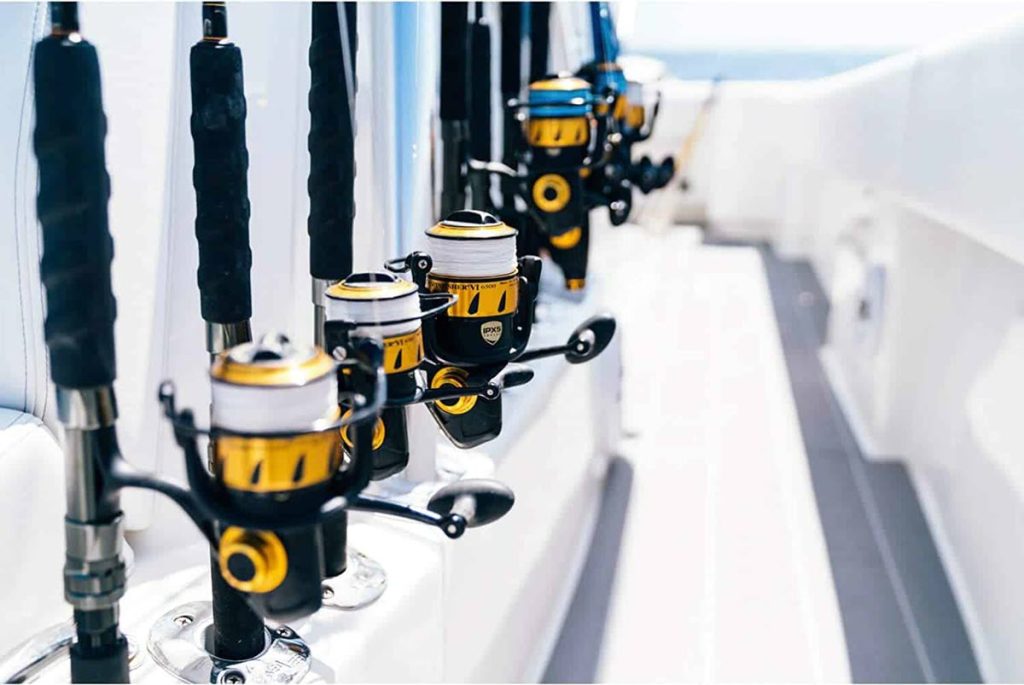
Some of our top reel picks for catching bream include:
- Shimano NASCI 2500HG FC NASCI
- Shimano Sahara 2500
- Shimano Sedona 2500 Spinning Reel
- SHIMANO Spheros SW Inshore Spinning Reels
- Daiwa Regal LT Spin Reel-RGLT2500D-XH
- Daiwa Ninja LT 2500,
- PENN Wrath Spinning Fishing Reel – WRTH2500C
- Daiwa Regal LT Spin Reel-RGLT2500D-XH
- PENN Fierce III Spinning Inshore Fishing Reel, Size 2000,
- Penn Spinfisher VI Spinning Saltwater Reel, 2500 Reel Size,
How To Catch Bream Tip #7
What’s The Best Line To Catch Bream
When fishing for bream, it is very important to consider the type of line you are using. In general, there are three types of line:
- monofilament,
- fluorocarbon and
- braided line.
Monofilament Line
Monofilament fishing line is a single-strand line usually made from nylon. Of the three main types of fishing lines, it is the weakest in terms of relative thickness. For example, a monofilament line that is 1 millimetre thick will not be as strong as a braided line or fluorocarbon that is also 1 millimetre thick.
However, monofilament is more flexible and stretchable than braided line. This can both be beneficial and harmful to one’s bream fishing efforts. On one hand, the stretchability of monofilament allows for more reliability regarding the hook staying in the fish’s mouth if it has already penetrated.
This is because oftentimes when fish are hooked, they shake their heads in an attempt to get free. When a fish shakes its head, if the hook is not properly set and the line is too stiff, the hook may be jerked free. The stretchability of the monofilament provides some relief to the hook setting and the angler when a fish shakes its head violently.
There is a wide range of monofilament brands and types on the market.
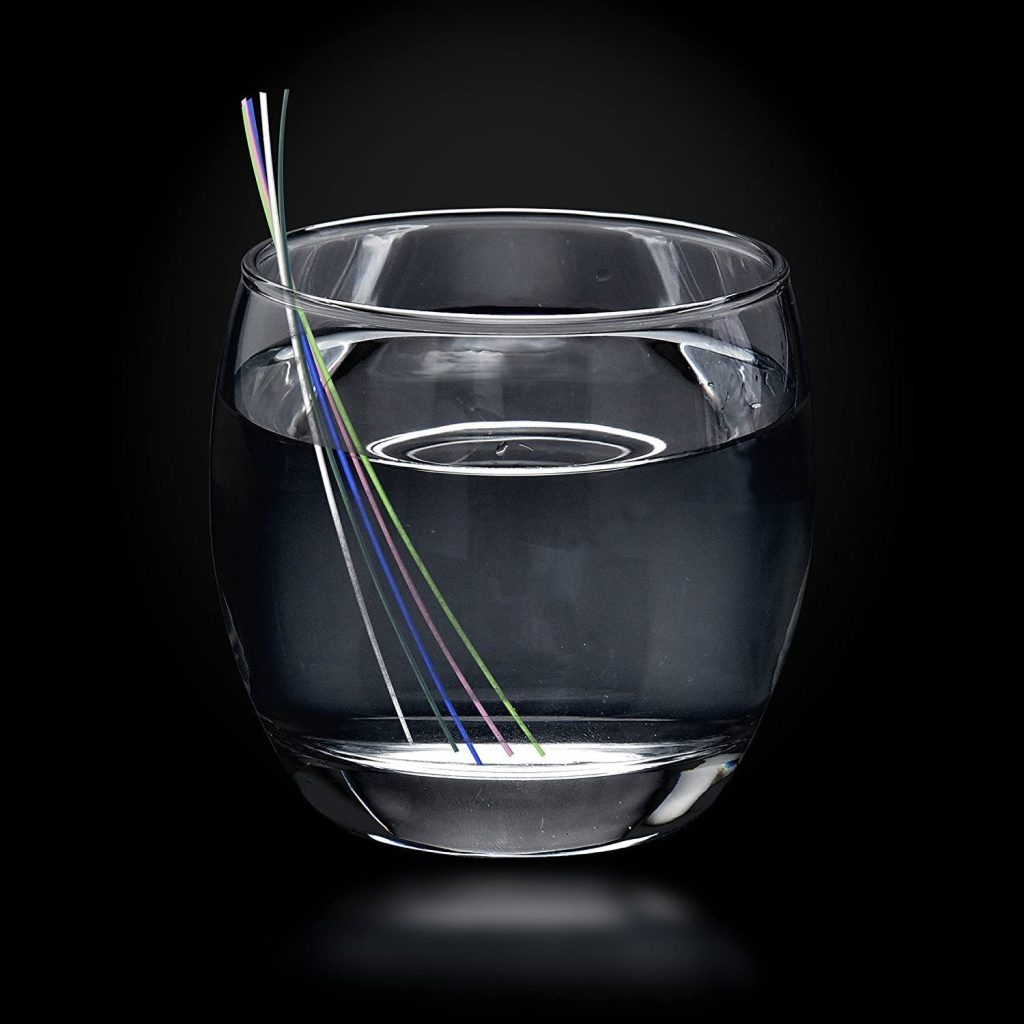
Fluorocarbon Line
Fluorocarbon is a single-strand line, similar to monofilament, but as its name suggests, it is made out of vinylidene fluoride resin and not nylon. Despite the material differences, fluorocarbon and monofilament are made by a very similar process. Fluorocarbon is more abrasion-resistant, harder to see, less stretchable, and absorbs less water than monofilament. It is more stretchable and weaker pound-for-pound than braided line. It also tends to be more expensive than both monofilament and braided line. Because of its attributes, fluorocarbon is the cream of the crop when it comes to fishing line for bream.
There is a wide range of monofilament and fluorocarbon brands and types on the market.
If you’re looking to fish for bream, here are some of our top-choice monofilament and fluorocarbon lines:
- Berkley Trilene Big Game – Mono Line
- Hi-Seas Quattro Monofilament Line
- KastKing Monofilament Superior Fishing Line
- Stren High Impact Monofilament Fishing Line
- Daiwa J-Fluoro Fluorocarbon Leader
- Berkley Vanish Fluorocarbon
- Seaguar Blue Label Fluorocarbon Fishing Line Leader
- Spiderwire EZ Fluorocarbon Fishing Line
- Yo-Zuri H.D. Carbon Fluorocarbon Leader Line
Braid Line
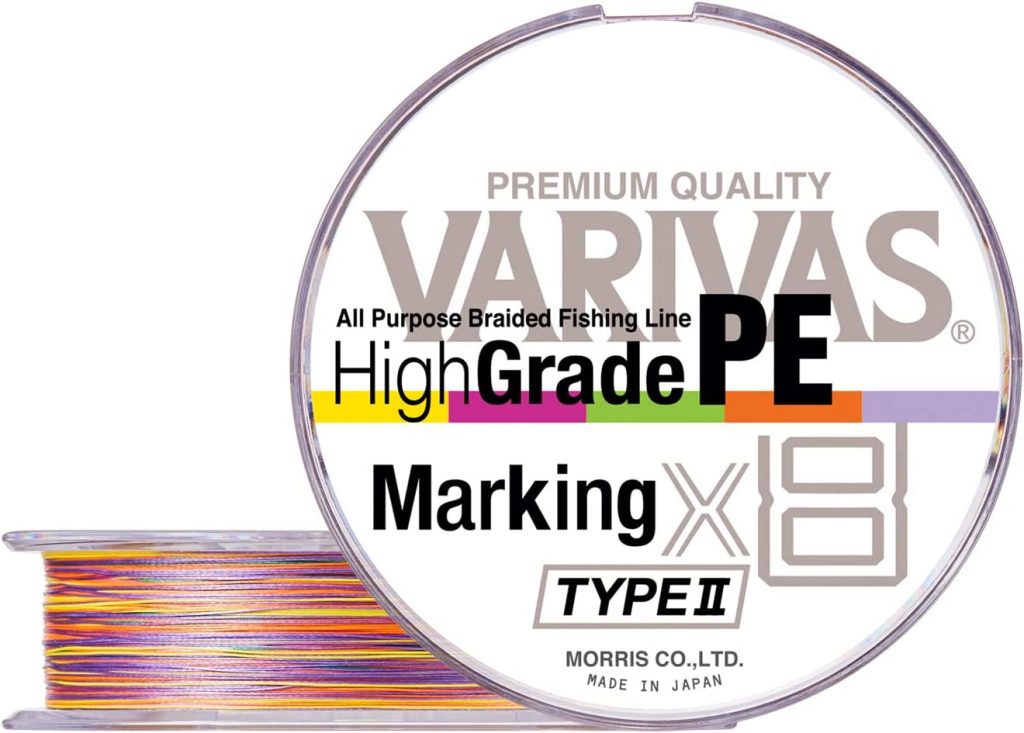
Braided line is a multi-strand fishing line and is the strongest of the three. It is usually best reserved for fish that are strong enough to pull drag (pulling the line out of the spool after being hooked) or for fish that are very large. Braided line is much thinner and stronger than monofilament and, therefore, not always necessary when fishing for bream. Braided line is much better suited for something like a shark, a fish that requires an incredibly strong line and a lot of it.
Braided line may be better for bream fishing in certain situations. If the waters where you will be fishing are dark and muddy, a brown braided line may actually blend in with the environment much better than monofilament, which may reflect some light and spook cautious fish. Though, in areas with lots of abrasive structures where bream are likely to be, braided line is more likely to be cut than monofilament or fluorocarbon.
Depending on what you’re looking for, there’s a wide range of braid brands and types to choose from.
Here are some of our favourite braids to use when fishing for Bream:
- Daiwa J-Braid 500M 8-Strand Woven Round Braid Line
- Daiwa J-Braid 300M 8-Strand Woven Round Braid Line
- VARIVAS HighGrade PE x8 Braid Line
- Hercules 8 Strands Braided Fishing Line
- KastKing Superpower Braided Fishing Line
How To Catch Bream Tip #8
What’s The Best Rig To Catch Bream?
There are several rigs that make great options for catching bream.
Running Sinker Rig
The most simple rig to make to catch bream is the running sinker rig. All this rig requires is a monofilament or fluorocarbon leader, a small sinker weight, a small swivel and a size 2-4 j-hook. Attach the hook to one end of the fluorocarbon leader and the swivel to the other end. Then place the sinker weight on the main line and tie the line to the leader’s swivel.
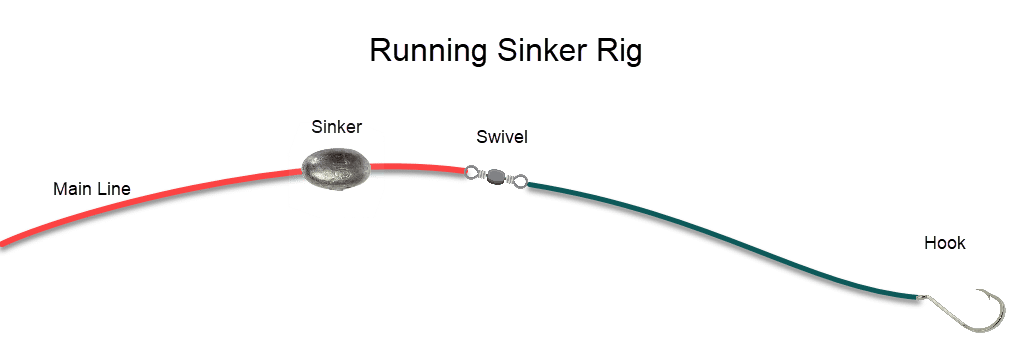
Paternoster Rig
Another great rig for catching bream is the paternoster rig. This rig features two hooks that sit under a teardrop weight which is attached to the bottom of the leader. This allows for the hooks to be less prone to snags on structures and other materials in the water. The hooks are connected to the leader each by a separate line that is then connected to a three-way swivel. The swivel that is at the top of the leader is connected to the main line.
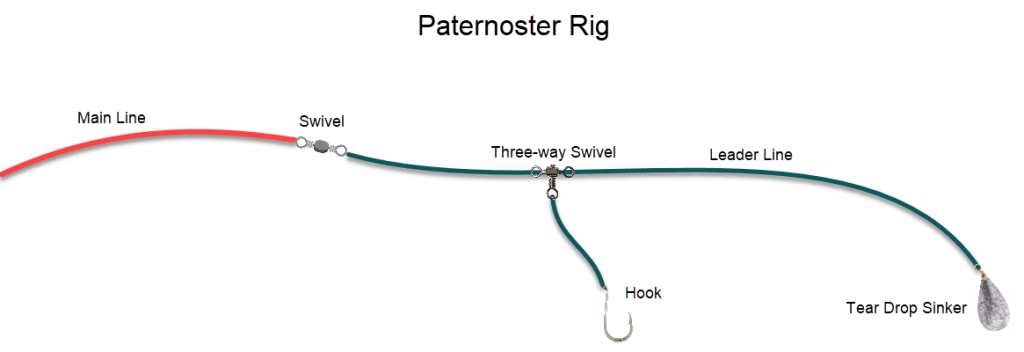
If you want to skip fancy knots or don’t feel like dealing with swivels, you can always go with the option of simply tying a hook onto your main line. This is a completely viable option for most bream fishing scenarios, though in some cases, you may lack the weight needed to make a longer cast or control where your bait lands with more precision.
At a minimum, it is recommended to use a leader slightly thicker than your main line because fish scales, spines, and structures may be abrasive to your line, and a proper leader will last longer under these conditions. A leader with a swivel also allows your hook to stay in line in the water rather than spinning around as you reel it in.
How To Catch Bream Tip #9
What Are The Best Baits to Catch Bream?
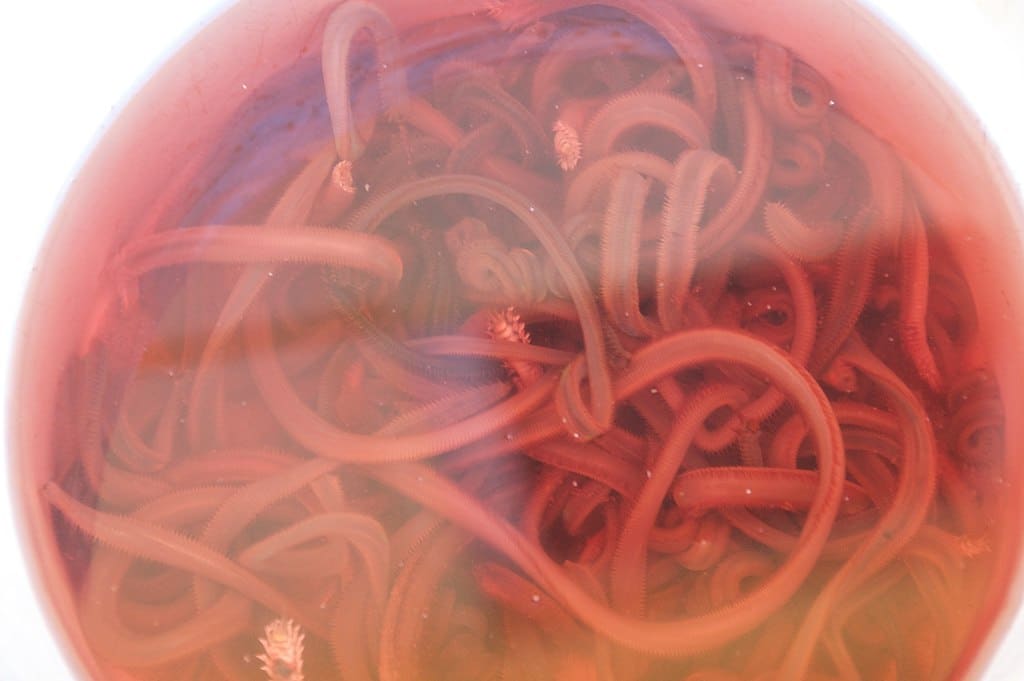
Although many anglers have their own personal favourite baits for catching bream, there is no single bait that works best in all situations. Some popular choices of bait for bream fishing include:
- earthworms,
- beach worms
- maggots,
- Pilchard
- shrimps or prawns (peeled)
- bass yabbies
- crickets
- mussels
- pips
- crabs
- fish guts
- raw chicken,
- bread, cheese crusts, or dough balls
Ultimately, how successful you are with landing bream with bait will depend on a variety of factors, including the water conditions and weather, the location or environment where you plan to fish, and your personal preferences as an angler.
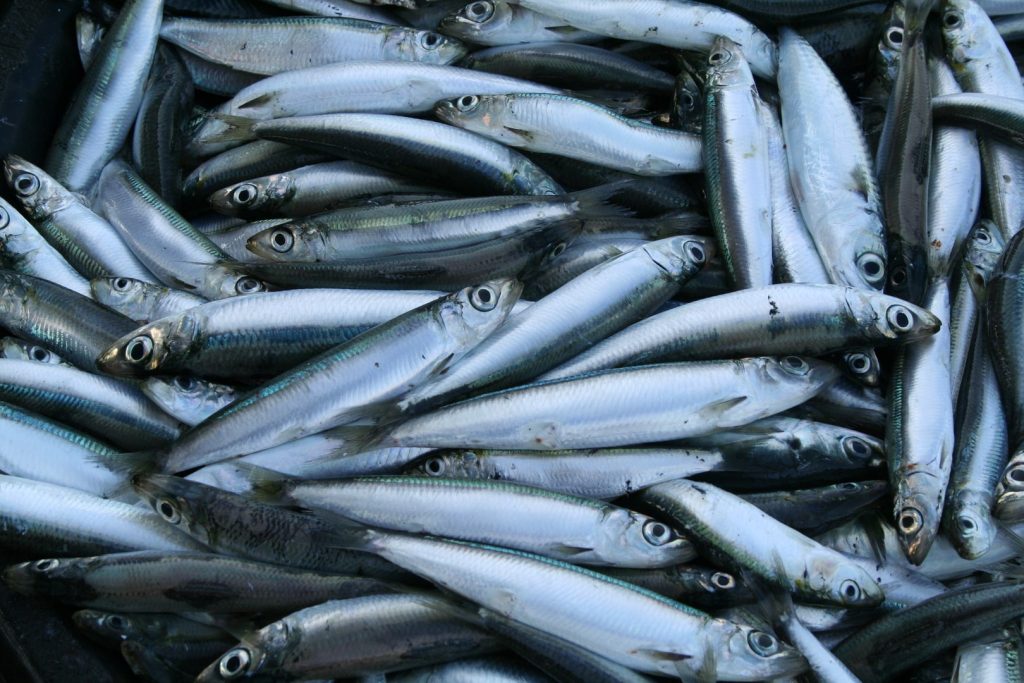
Bream Bait Fishing Tips
If you are bait fishing for Australian yellowfin bream, there are a few things to consider when choosing your bait. First, the environment and water conditions will have a big impact on your success. For example, if you are fishing in open, clear water, you may have better results with smaller, more natural-looking baits like live worms or small pieces of grub. On the other hand, if you are fishing in murkier or more restricted environments, larger bait offerings may be more successful.
In addition to the general conditions of the water, you will also want to take into account the time of year and weather when choosing your bait. For example,
- if you are fishing for bream on a bright, sunny day, you may want to choose smaller baits that move faster in the water and are more visible to the fish.
- However, if you are fishing on a cloudy or windy day, larger baits may be more successful due to their slower and more natural movement.
Ultimately, the key to finding a successful bait for catching bream is to experiment and try out different options. Some bream anglers have had great success using a variety of different bait types, while others have found that they consistently catch more fish with the same type of bait.
Another great way to encourage a bite is to use berley (aka chum), such as cut-up pilchards, bread, tuna oil or even crushed dog/cat biscuits.
The best way to find what works for you is to get out on the water and start fishing!
How To Catch Bream Tip #10
Lure fishing for bream can be a fun and exciting way to catch these popular fish. There are many different types of lures that anglers use to tempt bream, including hard lures, soft plastics, and flies.
What Are The Best Lures To Catch Bream?
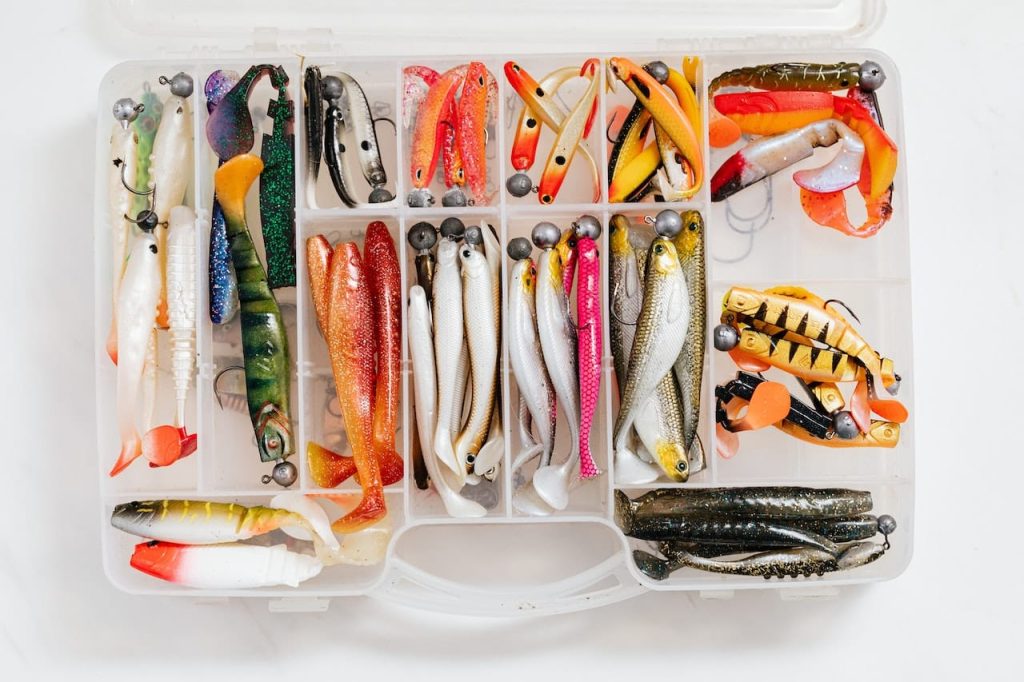
One of the most popular lure choices for bream fishing is soft plastics with a lightly weighted jig head. Jig heads come in a variety of sizes and shapes, with different weights depending on your target water conditions.
Soft-Plastic Lures

Soft body lures are some of the best lures to catch bream with. Soft body lures come in a huge variety of shapes, sizes and colours. A common shape for soft body lures is a fish with a paddle tail. Another typical soft-body lure has a worm-shaped body with a curly tail in the back for extra movement. When fishing with lures, give the lure a few seconds to rest between twitching or slow rolling.
Soft body plastics are great for bream fishing because they are cheap, and it will not be a big loss if one gets caught on a structure or debris and falls off. Soft body plastics can also be improved with scents made to attract fish. For bream, you will want to use a small soft body lure and try to mimic what they are feeding on in the area. For example, if you notice the bream feeding on small fish, try a minnow-shaped soft body lure and do your best to match the colour to the prey too.
These soft plastic lures have been known to be successful for bream:
- ZMAN Grubz 2.5″ – 8 Pack Soft Bait – Motor Oil
- Berkley Gulp! Sandworm,Soft Bait – 2in | 5cm
- Berkley Gulp! Minnow Soft Fishing Bait Smelt 3″ – Qty. 12
- Z-MAN Slim SwimZ 2 1/2 inch Soft Plastic Paddle Tail Swimbait 8 Pack
- Z-MAN EZ ShrimpZ 3.5 Inch 4 Pack Unrigged Soft Plastic Shrimp Bait
- ZMAN 2.5″ Slim Swimz Lures- 8 Pack – Elaztech [Colour: Greasy Prawn]
- Zman 2.5 Grubz Electric Pink
Hard-body Lures

Hard-body lures are an alternative to soft-body lures when fishing for bream. Most often, they are equipped with two treble hooks for maximum hooking ability. While this creates a higher hook rate for the fish, treble hooks also may hook onto debris or rocks much easier than a soft body lure with a j-hook. An advantage hard body lures have over soft body lures is the option for hollow bodies that can hold beads for noise creation. The beads will create vibrations that mimic the struggles of injured prey.
Surface lures can also be a great choice when fishing for bream. Surface lures are most effective in the early morning or late evening, as this is when the water is at its coolest, which affects fish activity levels.
Overall, there are many different lure choices that you can experiment with to catch bream. Most of the gear mentioned here can be sourced from local tackle stores, online retailers, or outdoor sports and equipment retailers.
Here are a few hard-bodied lures that have proven to be effective on bream:
- Atomic Hardz 38 Deep Crank Bait – Purple Shadow
- Atomic Hardz Shiner 85 Double Deep Fishing Lure #Rock Crab
- Daiwa 2020 Infeet Rolling Crank DR 32mm Floating Crankbait Fishing Lure #Blood Worm
- Cranka Lures Cranka Crab
- Savage Gear US-SG 3D Manic Shrimp
- Savage Gear 3D Shrimp RTF Saltwater Sinking Lure
- Savage Gear US-SG TPE Soft Vibe Sinking
- Band-It Series 300 Crankbait Bass Fishing Lures, Chartreuse Black Stripes, (BDT306)
- Yo-Zuri 3DR Shallow Crank Floating 2 3/4 Inch Shallow Diving Crankbait
How To Catch Bream – Final Thoughts
Conclusion
Congrats! You now know how to catch bream! Now that you have all the knowledge you need to get the right gear, tackle, and equipment, find a fishing spot and start landing some bream.
Let us know how many bream you catch!
You Might Also Like:
If you enjoyed reading this blog post on How To Catch Bream, you might also be interested in:
- 10 Best Fishing Chairs: Catch Your Breath and Catch Your Fish
- 8 Best Fishing Split Ring Pliers for Serious Anglers
- 8 Best Braid Scissors: Snip Your Way to Fishing Success
- Hooked on Comfort: 5 Best Fishing Stools You Need to Try
- How to Catch Murray Cod: 12 Masterful Tips For Success
- How to Catch Australian Bass | 13 Proven Tips by Pro Anglers
- 10 Best Fishing Pliers All Anglers Need in Their Tackle Box
- How to Catch Bonito: 13 Amazing Tips from Master Anglers
- How to Catch Mangrove Jack: 5 Tips for a Successful Fishing Trip
- 10 Best Waterproof Dry Bags to Keep Your Gear Safe and Dry
- 10 Best Fishing Gaffs for Landing Big Fish Quick & Easily
- 10 Best Waterproofing Sprays to Keep Your Gear Bone-Dry
Tags:
#How To Catch Bream, #How To Catch Bream Sydney, #How To Catch Bream Guide, #How To Catch Bream Tips, #How To Catch Bream For Beginners, #How To Catch Bream NSW,

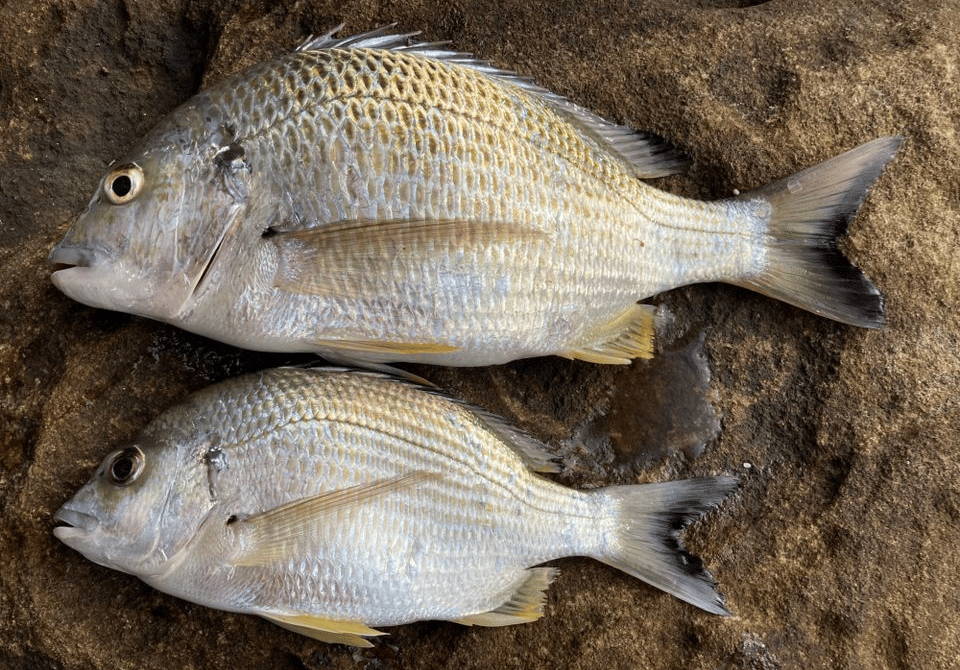
Recent Comments